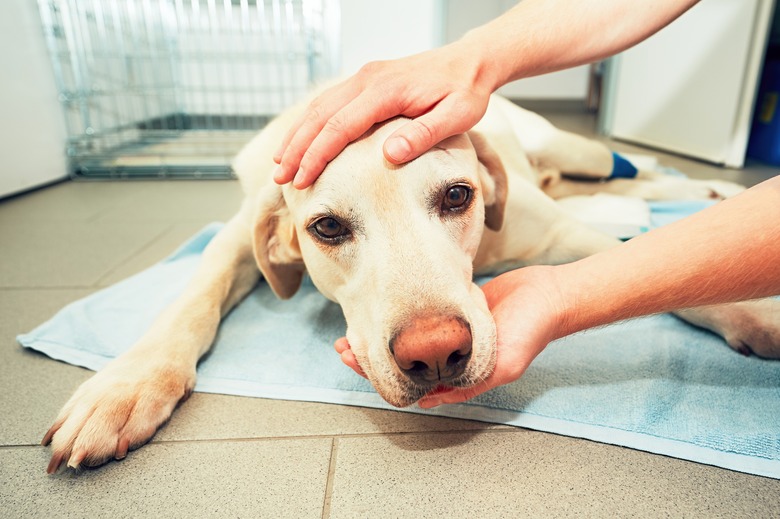What Are The Treatments For A Meibomian Cyst In Dogs?
Bumps in or near the eyes can be uncomfortable because they scratch the cornea or prevent the eye from shutting properly. If you notice a growth on your dog's eyelid, it could be what's known as a meibomian gland cyst or chalazion. Both dog and cat eyes may be affected by these, but they are more common in dogs. Health Navigator says these are usually caused by blocked oil glands, and they are not due to infection. While there are many treatments for these cysts, many of them will go away on their own.
Monitor the dog eye cyst
Monitor the dog eye cyst
In some cases, the best treatment for a dog eye cyst is to leave it alone. Dogs don't need to go through unnecessary surgery simply to remove a tiny, benign bump near their eye. That being said, you should still take your dog to the vet to properly identify it. If the cyst looks like a small whitehead and doesn't bother the dog or grow larger, the vet may advise you to leave it alone and to bring the dog back if it grows larger. If the vet says it is a problem or if you notice that it gets larger or starts bothering your dog, it will need to be removed.
In some cases, a dog will be deemed too old or in too poor of health to remove the tumor since anesthesia is required. In these cases, the vet might suggest an eye-lubricating product, such as GenTeal, that can be applied a few times a day, allowing the growth to slide over the cornea easier without causing abrasion or pain.
Cryosurgical removal of the cyst
Cryosurgical removal of the cyst
Cryosurgery involves using a freezing probe to freeze off the growth of a dog eyelid tumor. It is usually used only on small cysts, although it can also be used as a follow-up treatment to other removal methods because it can destroy any residual tumor cells to prevent regrowth. That's because underneath the visible part of the cyst, there may be more cyst lying under the surface of the skin.
MSPCA-Angell says the procedure starts with the tumor being trimmed so it is flat with the eyelid's surface, and then it is treated with two rounds of freezing from the probe, lasting about 20 seconds each. Towels and a corneal shield are used to protect the dog's eye and skin from the probe. According to VCA Hospitals, this method can sometimes be used only with localized anesthesia, reducing the risks of surgery associated with general anesthesia.
CO2 Laser Removal
CO2 Laser Removal
Like cryosurgery, laser surgery allows for a bloodless surgical site and helps ensure the full cyst is removed, including the nonvisible part under the skin. As an added benefit, according to Aesculight, localized anesthesia can be used in place of general anesthesia in some cases.
When laser or traditional surgery is performed, the meibomian gland is often removed along with the cyst since it is responsible for producing the oil that results in the cyst, and without removing the gland, more cysts may erupt later. Unlike cryosurgery, laser surgery requires the use of sutures to close the surgical site.
Surgical removal of meibomian cysts
Surgical removal of meibomian cysts
The most common way to remove a dog eye cyst is with traditional surgery. For small tumors, localized anesthesia is still sometimes an option, but larger cysts will always require general anesthesia. When the cyst is removed, the meibomian gland will usually be removed along with it. The surgery will require sutures to close up the incision site, which may be swollen for a week after the surgery.
In many cases, the surgery may be followed up with cryosurgery to ensure any remaining cells in both the cyst and the gland will be completely destroyed so no further cysts will erupt. In less than 10 percent of cases, some cells are left behind and another cyst will grow, which may require a second round of surgery.
Always check with your veterinarian before changing your pet's diet, medication, or physical activity routines. This information is not a substitute for a vet's opinion.
